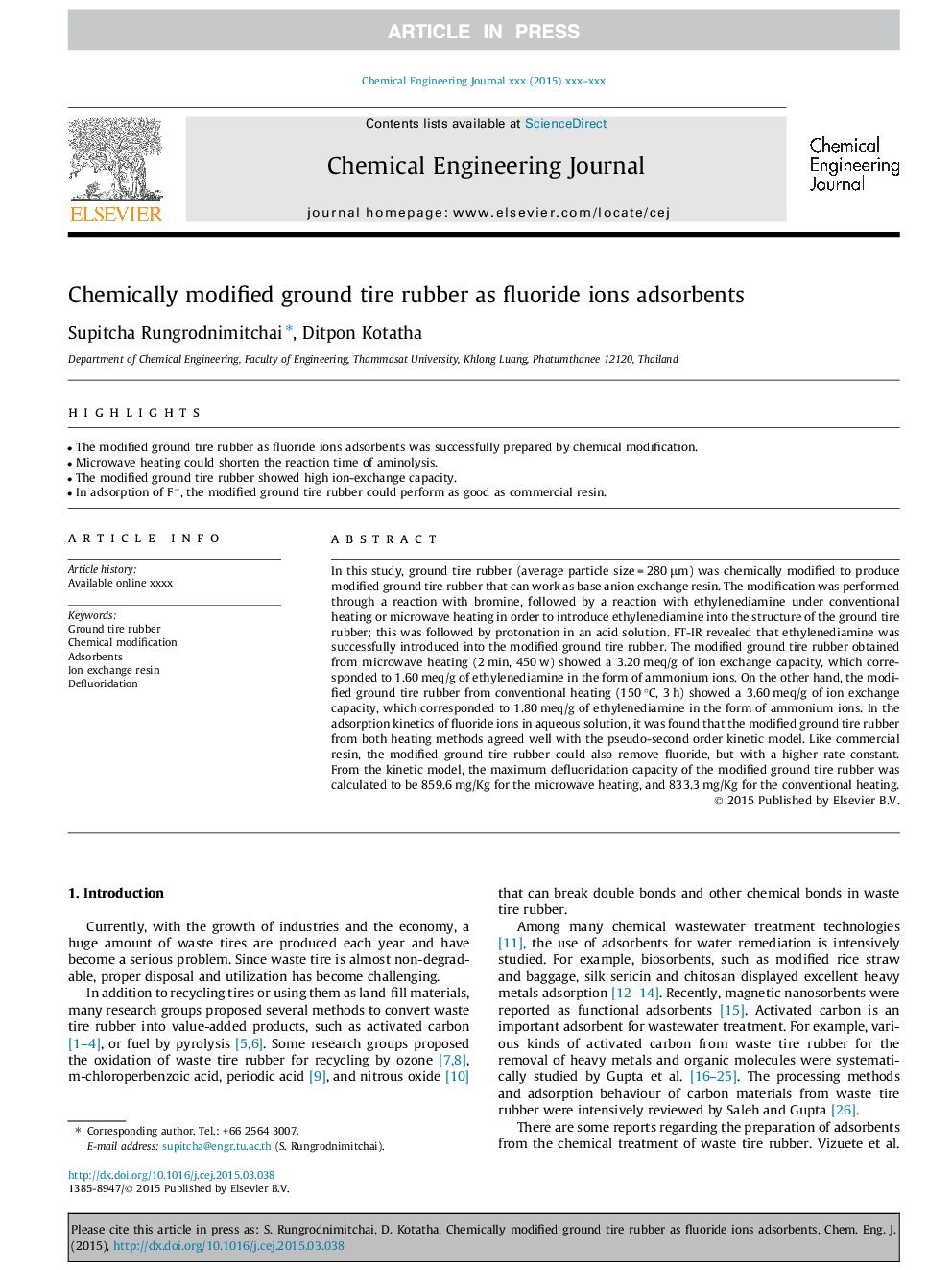| Article ID | Journal | Published Year | Pages | File Type |
|---|---|---|---|---|
| 6584008 | Chemical Engineering Journal | 2015 | 9 Pages |
Abstract
In this study, ground tire rubber (average particle size = 280 μm) was chemically modified to produce modified ground tire rubber that can work as base anion exchange resin. The modification was performed through a reaction with bromine, followed by a reaction with ethylenediamine under conventional heating or microwave heating in order to introduce ethylenediamine into the structure of the ground tire rubber; this was followed by protonation in an acid solution. FT-IR revealed that ethylenediamine was successfully introduced into the modified ground tire rubber. The modified ground tire rubber obtained from microwave heating (2 min, 450 w) showed a 3.20 meq/g of ion exchange capacity, which corresponded to 1.60 meq/g of ethylenediamine in the form of ammonium ions. On the other hand, the modified ground tire rubber from conventional heating (150 °C, 3 h) showed a 3.60 meq/g of ion exchange capacity, which corresponded to 1.80 meq/g of ethylenediamine in the form of ammonium ions. In the adsorption kinetics of fluoride ions in aqueous solution, it was found that the modified ground tire rubber from both heating methods agreed well with the pseudo-second order kinetic model. Like commercial resin, the modified ground tire rubber could also remove fluoride, but with a higher rate constant. From the kinetic model, the maximum defluoridation capacity of the modified ground tire rubber was calculated to be 859.6 mg/Kg for the microwave heating, and 833.3 mg/Kg for the conventional heating.
Related Topics
Physical Sciences and Engineering
Chemical Engineering
Chemical Engineering (General)
Authors
Supitcha Rungrodnimitchai, Ditpon Kotatha,
